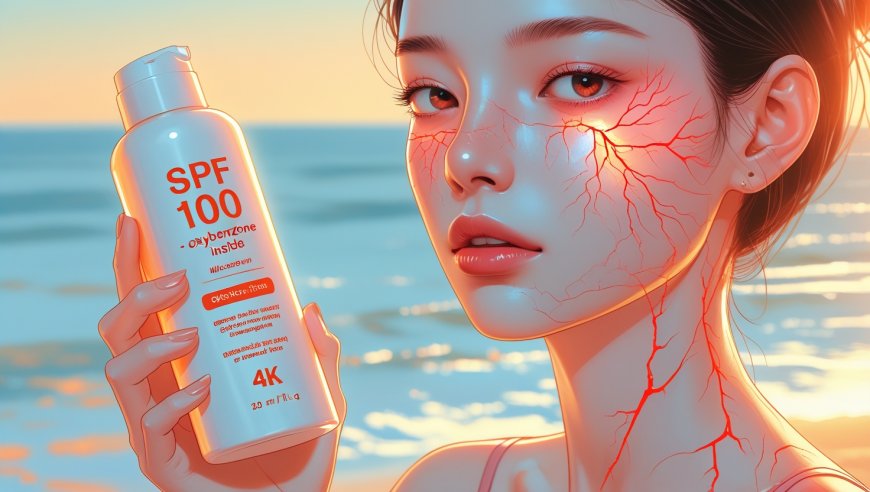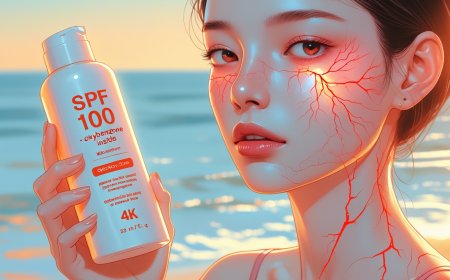The Dark Side of Sunscreen No One Talks About
Most people wear sunscreen to protect themselves from cancer. But what if your SPF is doing the exact opposite? Here's what you need to know about the ingredients no one's warning you about.

We’re all told the same thing: never skip sunscreen. Wear it daily, reapply it every few hours, and go higher on the SPF. But while you're rubbing it in, trusting it to protect your skin — there's something shady happening under the surface. No one tells you that certain sunscreens may actually be raising your risk of cancer, not lowering it.
Let’s start with oxybenzone — one of the most common active ingredients in chemical sunscreens. It’s been flagged in multiple studies for acting like a hormone disruptor. That means it can mess with your endocrine system — the one responsible for regulating hormones like estrogen and testosterone. And when your hormones are out of balance for too long, it opens the door to chronic issues… and yes, even cancer. Oxybenzone is banned in countries like Hawaii, not just for its impact on humans but also because it kills coral reefs. If it’s strong enough to damage an entire ecosystem, maybe it shouldn't be on your skin.
Another big red flag is benzene. In 2021, an independent pharmacy company ran tests on nearly 300 sunscreen products. They found detectable levels of benzene — a known carcinogen — in over a quarter of them. Some were big-name brands. Some were even labeled as “clean” or “sensitive skin” safe. Benzene isn’t supposed to be in sunscreen at all, but it shows up due to poor manufacturing standards or contamination in production. And since sunscreen is often applied multiple times a day, that exposure builds up.
Spray sunscreens are worse. You breathe in the mist while applying it, and those tiny particles go straight into your lungs. The issue here isn’t just skin — it’s internal. You’re not just applying something topical; you’re absorbing it through skin, inhaling it, letting it sit in your pores. And remember — your skin isn’t a wall. It’s a sponge.
There’s also the UV filter called octinoxate — another hormonal disruptor. It breaks down when exposed to sunlight (ironic, right?), which can generate free radicals. These unstable molecules damage your DNA over time, potentially triggering mutations. Isn’t that exactly what sunscreen was supposed to prevent?
Then there's the false sense of safety. People think, “Oh, I’m wearing SPF 50, I’m safe.” But they stay in the sun longer, reapply less than needed, and end up doing more damage because they’ve lowered their guard. Especially with fair-skinned people or those with existing skin sensitivities — this is a real trap.
Let’s not even start on fragrance, preservatives, and microplastics that come hidden in the "extra" ingredients. Many of them haven’t even been properly tested long-term. We’re putting these products on children, on babies, on broken or acne-prone skin — and the industry rarely talks about how it affects health down the line.
Now, this doesn’t mean you should walk into the sun raw. Sun damage is real. But the answer isn’t every sunscreen. The answer is using physical (mineral) sunscreens — with zinc oxide or titanium dioxide as the main ingredients. These sit on the skin’s surface, reflect the rays, and don’t enter your bloodstream. Plus, covering up with clothing, staying in shade, and building tolerance slowly helps too. Ancient cultures thrived under the sun without SPF 100. They used mud, herbs, natural oils, and timing. There are other ways.
Bhai, it’s mad how no one tells you this. We’re so quick to believe what we see in ads or skincare influencers, but the truth is buried under shiny packaging and fake “dermatologist tested” labels.















































